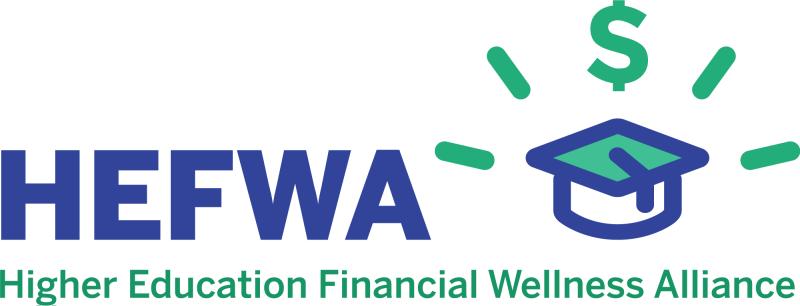The Arbol team was thrilled to be back at this year’s Higher Education Financial Wellness Alliance (HEFWA) Summit in Columbus, Ohio.
As a sponsor and panel leader, we had the chance to connect with the front lines of student support—financial aid leaders, advisors, and administrators working every day to help students stay enrolled and on track. Our two sessions sparked conversations on how institutions can respond to financial stress and build coordinated, student-centered systems.
The message across the summit was clear. It’s time to stop treating financial wellness as a side initiative and start embedding it into the core of student success strategy.
Here’s what that shift looks like in practice.
Start with a triggering event
Ball State built its financial wellness program around a single pain point: students blocked from registering due to unpaid balances. In a session led by Ball State’s Jonathan Mock and Evan Richter, they explained how the university built an effective intervention strategy by starting at the bursar’s office, linking financial holds to immediate outreach and coaching sessions.
They tracked which students paid, which registered, and how many stayed enrolled. Then they shared the results with cabinet-level leadership. This approach was targeted, strategic and backed by data.
It enabled them to get buy-in at the cabinet level because they used measurable results to build momentum. It also allowed them to create momentum with the student population as they built trust and confidence, which created organic popularity as students socialized their experiences with one another.
The takeaway: Institutions gain momentum when they target real-time student issues and use data to demonstrate value.
Treat student finance as a campus-wide challenge
MIT’s Erica Aguiar outlined a student experience where problems cross departments. A single student might need to visit financial aid, housing, counseling, and student support just to stay enrolled. These needs don’t follow institutional lines, and support strategies shouldn’t either.
Aguiar outlined how MIT is stressing the importance of warm handoffs, shared protocols, and a clear path from start to finish. When staff align behind a common map, less students are falling through the cracks due to financial stress.
The takeaway: Establish a cross-functional steering committee—financial aid, counseling, career services, IT—to build complementary strategies and shared escalation paths.
Move earlier in the student lifecycle
Sherrá Watkins, AVP of student health and wellness at the University of Utah, framed it simply: prevention is retention. Waiting for students to miss a payment or drop a class is too late. Institutions should integrate financial planning into orientation and first-year advising.
This is an important lesson that Arbol has learned through its partners, as several of them have implemented financial planning and roadmapping directly into the first-year experience. Notably, Arbol user Buffalo State University took this step with financial planning and roadmapping into their first-year experience, and have produced quantifiable results in improved persistence and retention. With this approach, Buffalo State students are better able to navigate their financial obligations on campus.
The takeaway: Integrate a financial planning module into your first-year experience curriculum, with advisors trained to revisit and refine each student’s roadmap each term. A financial roadmap belongs next to an academic plan.
Embed basic needs into the financial conversation
Trellis Strategies’ Carrie Welton pushed the conversation beyond tuition. Food security, housing, transportation, and internet access all shape student outcomes. Trellis is a consultancy at the cutting-edge of data-based student support, and Welton emphasized how students should know from their first day on campus how to access these supports. Once that communication framework is nailed, she said institutions should track that access like any other financial aid. It’s not just about offering help. It’s about building basic needs into financial infrastructure.
The takeaway: Partner with on-campus food pantries and housing offices to preload basic needs allowances onto your financial wellness platform, then track who’s using them and what it means for their ongoing financial viability.
Prove the impact with data that matters
Everyone at HEFWA acknowledged the same obstacle: financial wellness programs often struggle to win institutional support.
That changes when the work is tied to measurable outcomes.
The successful programs on display at the conference aligned their strategy with bursar goals, enrollment goals, and executive priorities. They reduced manual outreach, cleared more holds, and recovered tuition.
When every department sees how the work supports their own success metrics, they want to partner—and they want to invest.
The takeaway: Develop a one-page ROI dashboard that updates weekly and is shared with your provost, bursar, and enrollment teams.
What happens next
The most effective institutions are aligning early action, cross-campus coordination, and data-driven outcomes. They know that solving this problem with manpower is costly and unsustainable. What’s required is a systematic and scalable approach steering large student cohorts to specific action steps and financial viability.
Another best practice is understanding the holistic nature of student financial wellness as it spans departments, requiring systemic buy-in to truly move the needle in terms of retention. That means those who are pushing this change have to understand what movitates the individual offices. A bursar, for instance, cares about holds reduction and accounts receivable. Student affairs care about the student experience. Each department must be met on their own terms.
Arbol is part of this shift. We help institutions turn fragmented workflows into integrated support, with clear roadmaps and measurable results.
HEFWA 2025 showed where the field is heading. Now it’s time to act.
.png)
